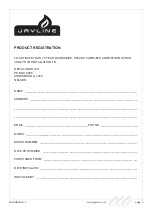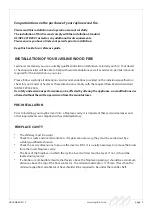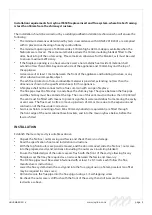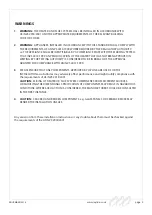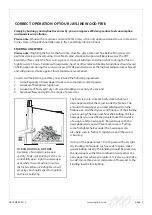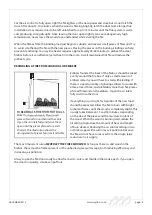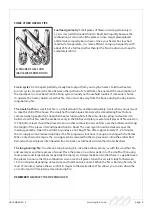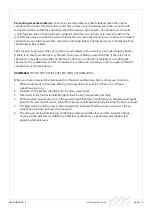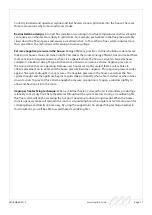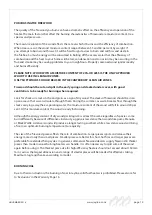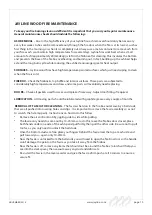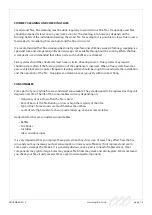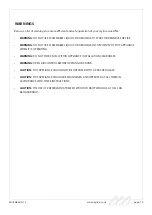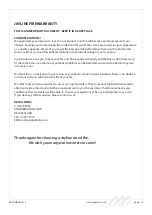
page 12
www.jayline.co.nz
NOVEMBER 2016
PURCHASING THE FIREWOOD
The quality of the fi rewood you burn can have a dramatic eff ect on the effi ciency and operation of the
heater. The main factors that aff ect the burning characteristics of fi rewood are moisture content, tree
species and piece size.
The moisture content of the wood aff ects the rate at which it burns and the effi ciency of combustion.
When trees are cut, the wood moisture content ranges between 35 and 60 per cent by weight. If
you attempt to burn wood this wet it will be hard to ignite, slow to burn and will hiss and sizzle in
the fi rebox. So much energy will be consumed in boiling off the excess water that the effi ciency of
combustion and the heat to your home will be low, condensation and corrosion may be occurring in the
fl ue and smoke may be causing problems to your neighbours. Properly seasoned wood ignites readily
and burns effi ciently.
PLEASE NOTE: WOOD WITH A MOISTURE CONTENT OF 25% OR LESS IS THE ONLY APPROVED
WOOD TO USE IN CLEAN AIR ZONES.
ONLY SOFTWOODS SHOULD BE USED IN THE CANTERBURY CLEAN AIR ZONES.
Firewood should be cut and split in the early spring and stacked under cover, with good
ventilation, to be ready for burning when required.
Look for checks or cracks in the end grain as a sign of dry wood. The stacks of fi rewood should be in an
open area so that air can circulate through them. During the summer, as warm breezes fl ow through the
stacks, carrying away the evaporating water, the moisture content of the wood will fall to around 20 per
cent. At this moisture content the wood is ready for burning.
Although the energy content of dry wood per kilogram is almost the same regardless of species, some
burn diff erently because of diff erences in density e.g pine is less dense than woods like gums, Manuka
or Black Wattle. A denser wood will produce a longer-lasting coal bed, while a less dense wood will bring
a fi re to an optimum burning temperature more quickly.
The size of the fi rewood pieces aff ects the rate of combustion. Larger pieces ignite and release their
energy more slowly than small pieces. Smaller pieces are better for short, hot fi res and larger pieces are
preferable for extended fi ring cycles. In general, commercial fi rewood dealers supply fi rewood in thicker
pieces than modern wood-burning heaters can handle. It is often necessary to split some of the wood
again before using it. The thickest piece size for high-effi ciency heaters should not exceed about 150mm
(6 in.) across the largest dimension and a range of smaller pieces will be needed for eff ective stoking.
Maximum log length varies according to model.
BURNING COAL
Due to their construction, the burning of coal in Jayline solid fuel heaters is prohibited. Please also refer
to ‘Exclusions’ in the Warranty Page 16.


